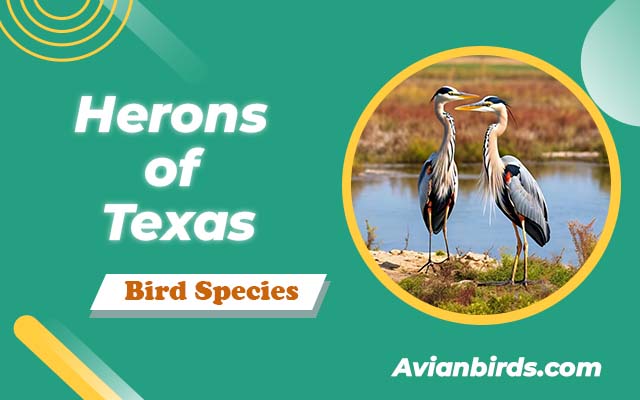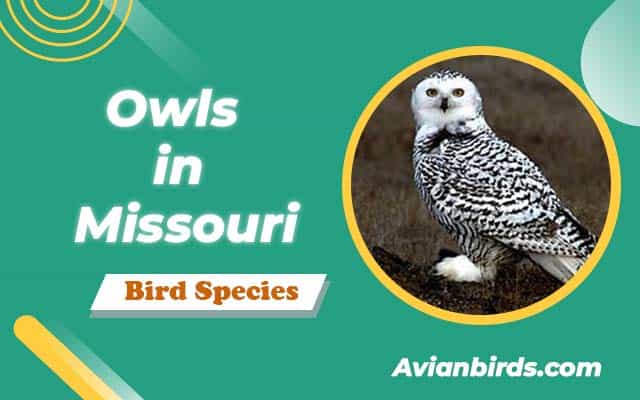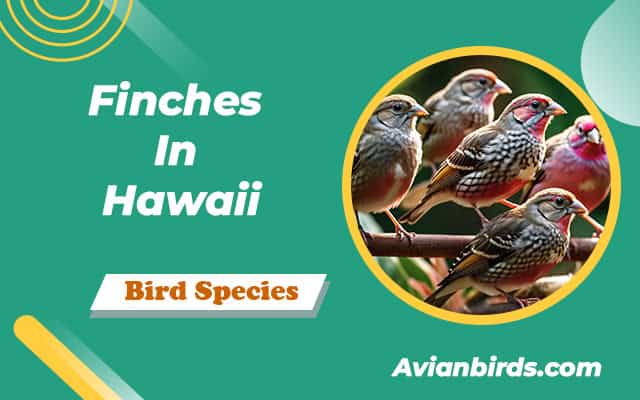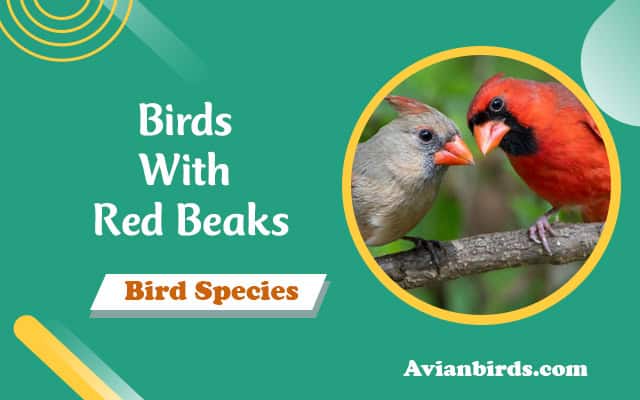17 Herons of Texas (With Pictures)
Welcome to our guide on the diverse heron species that call Texas home. Texas is a haven for herons, with its abundant wetlands and coastal regions providing the perfect habitat for these majestic birds. In this article, we will take you on a journey to explore 12 unique heron species that grace the Lone Star State. From the iconic Great Blue Herons along the Texas coast to the elusive Least Bittern and Yellow-crowned Night-Herons, we’ll delve into their habitats, behaviours, and the vital roles they play in our ecosystem. Join us as we uncover the beauty and wonder of the Herons of Texas.
1. Great Blue Heron in Texas
- Scientific name: Ardea herodias
- Life span: 15 years
- Size: 91-137 cm (36-54 in)
- Weight: 2-3.6 kg (4.4-7.9 lbs)
- Wingspan: 167-201 cm (66-79 in)
- Status: Least Concern
Great Blue Heron is a beautiful bird generally seen along the Texas coast, adding to the collection of herons in the state. Its large size and striking blue feathers make it quite a sight.
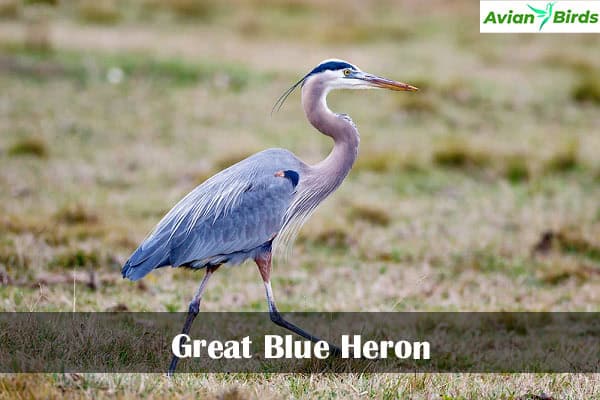
Moreover, these birds are perfectly adapted to living by the coast. Moreover, Their long legs help them navigate through marshes and shallow waters, while their strong beaks are ideal for catching fish and other small creatures. You might even see one patiently waiting to catch its prey.
Plus, during the breeding season, Great Blue Herons come together in groups to build large nests in trees near the water. These nests are basic for breeding and protecting their young.
Furthermore, the Great Blue Heron is important for the ecosystem. Also, They help control the number of fish and other water animals, keeping the coastal environment balanced. So, when you’re on the Texas coast, watch for these magnificent birds that highlight the state’s natural beauty and variety.
| Common Name | Scientific Name | Habitat |
|---|---|---|
| Great Blue Heron | Ardea herodias | Coastal regions, marshes, wetlands |
2. American Bittern
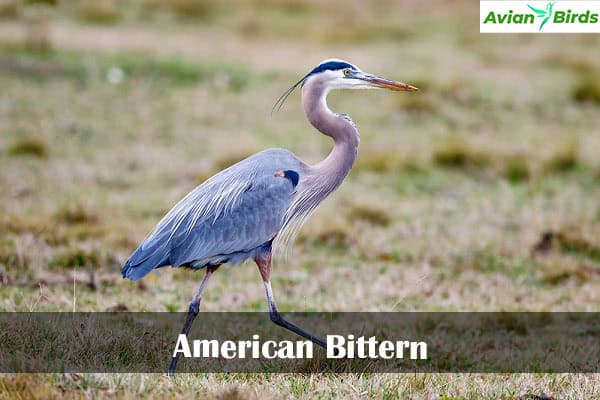
- Scientific name: Botaurus lentiginosus
- Life span: 6 years
- Size: 58-81 cm (23-32 in)
- Weight: 0.4-1 kg (0.9-2.2 lbs)
- Wingspan: 91-104 cm (36-41 in)
- Status: Least Concern
American Bittern (Botaurus lentiginosus) is a solitary heron that possesses excellent camouflage skills. With its brown and buff-colored plumage, streaked patterns, and elongated neck, it blends seamlessly into its surroundings. This allows the American Bittern to patiently stalk its prey, which includes fish, amphibians, and invertebrates.
“The American Bittern’s ability to mimic the sound of its habitat is truly remarkable. Its unique ‘gulp’ call is often described as a loud, booming sound, resembling an old pump being primed. This call serves both for communication and territorial defense.”
3. Black-crowned Night-Heron

- Scientific name: Nycticorax nycticorax
- Life span: 20 years
- Size: 61-69 cm (24-27 in)
- Weight: 0.6-1.2 kg (1.3-2.6 lbs)
- Wingspan: 91-122 cm (36-48 in)
- Status: Least Concern
Black-crowned Night-Heron (Nycticorax nycticorax) is a striking, medium-sized heron active during twilight hours. Its distinctive black crown and back, gray wings, and red eyes make it easily recognizable. Also, this heron species is most active at night, foraging for aquatic prey such as fish, crustaceans, and insects.
The American Bittern and the Black-crowned Night-Heron play essential roles in the ecosystem of Texas wetlands. They share the natural balance by controlling populations of small aquatic creatures and acting as indicators of wetland health. Also, they provide birdwatchers and nature buffs the opportunity to witness these unique heron species in their natural habitat.
American Bittern and Black-crowned Night-Heron Comparison:
| American Bittern | Black-crowned Night-Heron |
|---|---|
| Solitary bird that blends into its surroundings with excellent camouflage skills | Active during twilight hours and easily recognizable with distinctive black crown and red eyes |
| Preys on fish, amphibians, and invertebrates | Feeds on fish, crustaceans, and insects, a diet facilitated by the rich biodiversity present in wetlands and estuaries, crucial habitats for the tricolored heron in Texas. |
| Produces a unique ‘gulp’ call, resembling an old pump being primed | Active at night and forages for prey in darkness |
| Plays a crucial role in wetland health and ecosystem balance | Acts as an indicator of wetland health and controls populations of small aquatic creatures |
Green Herons and Cattle Egrets, closely related to egrets and herons, showcase the diversity among these species.
The Green Heron and Cattle Egret are two common heron species found in the coastal areas of Texas. These birds belong to the heron family and have distinct characteristics that set them apart.
4. Green Heron
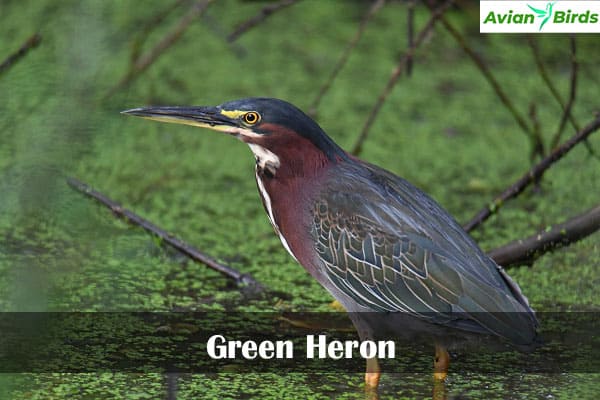
- Scientific name: Butorides virescens
- Life span: 7 years
- Size: 38-50 cm (15-20 in)
- Weight: 0.1-0.2 kg (0.2-0.5 lbs)
- Wingspan: 58-66 cm (23-26 in)
- Status: Least Concern
Green Heron is known for its small size and its ability to blend badly into their surroundings. With a length of around 18 inches, it is one of the smallest herons in North America. The plumage of the Green Heron is predominantly greenish-gray, with a dark cap on its head and a chestnut-coloured neck. Its short, thick bill and yellow legs provide further distinguishing features.
A popular fact about the Green Heron is its unique hunting technique. These stealthy birds use tools such as twigs and feathers to lure fish, which they then catch with a swift strike of their bill.
Green Heron can be found in both freshwater and saltwater habitats, including marshes, swamps, and coastal estuaries. It is often seen perched on branches near the water, waiting patiently to catch its prey. Although its population is stable, the Green Heron still faces threats such as habitat loss and pollution, emphasizing the importance of conservation efforts.
5. Cattle Egret
- Scientific name: Bubulcus ibis
- Life span: 9 years
- Size: 46-56 cm (18-22 in)
- Weight: 0.2-0.5 kg (0.5-1.1 lbs)
- Wingspan: 88-96 cm (35-38 in)
- Status: Least Concern

The Cattle Egret, also known as the “Bubulcus ibis,” is another heron species commonly found in coastal areas. Unlike the Green Heron, the Cattle Egret is slightly larger, measuring around 20 inches long. It has a white body with buff-coloured feathers on its head, neck, and back during the breeding season.
Cattle Egrets are often seen foraging in fields and pastures, uniquely associated with cattle. They can be observed perched on the backs of cattle, feeding on insects disturbed by the larger animals. This behavior has earned them the nickname “cowbirds.”
“The Cattle Egret’s coexistence with cattle not only benefits the birds but also provides an ecological service by reducing the population of insects harmful to livestock.”
In addition to their association with cattle, Cattle Egrets can be found in marshes, wetlands, and coastal areas. These adaptable birds have expanded their range worldwide and are known for their ability to adjust to various environments.
6. Great Egret
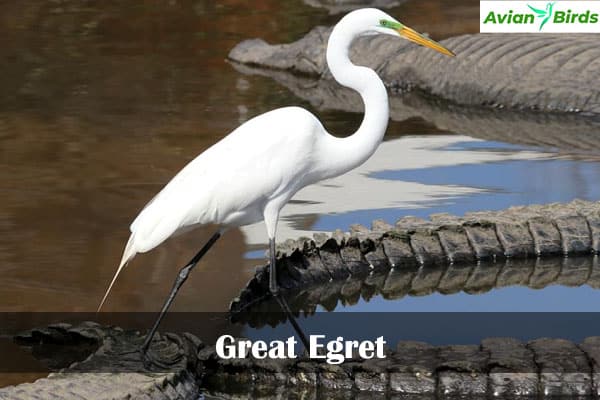
- Scientific name: Ardea alba
- Life span: 15 years
- Size: 81-101 cm (32-40 in)
- Weight: 0.7-1.4 kg (1.5-3.1 lbs)
- Wingspan: 140-170 cm (55-67 in)
- Status: Least Concern
Great Egret (Ardea alba) is a majestic sight with its large size and impressive wingspan. It is commonly found in wetland habitats, essential for the nesting and feeding of herons and other birds, are characterized by a diverse array of shrub and small trees. and estuaries along the Texas coast, areas often rich in shrubs and small trees. This magnificent egret stands tall and offers captivating displays as it hunts for fish and other aquatic prey in the shallow waters.
7. Snowy Egret

- Scientific name: Egretta thula
- Life span: 17 years
- Size: 56-66 cm (22-26 in)
- Weight: 0.3-0.6 kg (0.7-1.3 lbs)
- Wingspan: 86-102 cm (34-40 in)
- Status: Least Concern
Snowy Egret (Egretta thula) is another enchanting heron species that can be spotted in the coastal regions of Texas. This smaller egret, adorned with elegant white plumage and vibrant yellow feet, is often seen wading in shallow water. Its slender beak snatches fish and small invertebrates with expert precision.
“The Great Egret and Snowy Egret are stunning examples of the beauty found in coastal regions. These remarkable herons captivate observers with their elegance and grace.” – Birdwatching Enthusiast
Both the Great Egret and Snowy Egret play vital roles in the coastal ecosystem of Texas. Their presence indicates the health of the wetlands, as they rely on these habitats for nesting, foraging, and raising their young. By maintaining the ecological balance, they contribute to the overall well-being of the coastal regions they call home.
To appreciate the visual contrast between these two heron species, let’s take a closer look:
| Characteristic | Great Egret | Snowy Egret |
|---|---|---|
| Size, varying significantly among the heron’s nest, reflects their diverse ecosystem roles. | Larger | Smaller |
| Plumage Color | Pure white | Pure white with yellow feet |
| Habitat | Wetlands, estuaries | Coastal areas, wetlands |
| Hunting Behavior | Slow and deliberate | Active and agile |
As you can see, while both the Great Egret and Snowy Egret share similarities in their appearance and habitat preference, subtle differences exist in their size, plumage color, and hunting behavior. These distinctions add to the fascination of observing these magnificent birds in the wild.
The Great Egret and Snowy Egret are true treasures of the coastal regions of Texas. Their delicate beauty and natural elegance serve as a reminder of the importance of preserving and protecting the wetlands and estuaries that provide them with a thriving habitat.
Least Bittern and Yellow-crowned Night-Heron
While Texas is renowned for its diverse heron species, two lesser-known members of this majestic bird family deserve our attention: the Least Bittern and the Yellow-crowned Night-Heron. Although less commonly seen in Texas, these herons possess unique characteristics and play an important role as colonial waterbirds in the state’s ecosystem.
8. Least Bittern: The Master of Camouflage
- Scientific name: Ixobrychus exilis
- Life span: 6 years
- Size: 28-36 cm (11-14 in)
- Weight: 0.1-0.2 kg (0.2-0.5 lbs)
- Wingspan: 41-51 cm (16-20 in)
- Status: Least Concern
The Least Bittern (Ixobrychus exilis) is a small heron species that excels in blending seamlessly into its surroundings. Its vibrant plumage, featuring brown and buff tones, allows it to disappear among dense vegetation, making it challenging to spot. The Least Bittern’s preference for habitats with tall grasses, cattails, and marshes further contributes to its ability to elude detection.
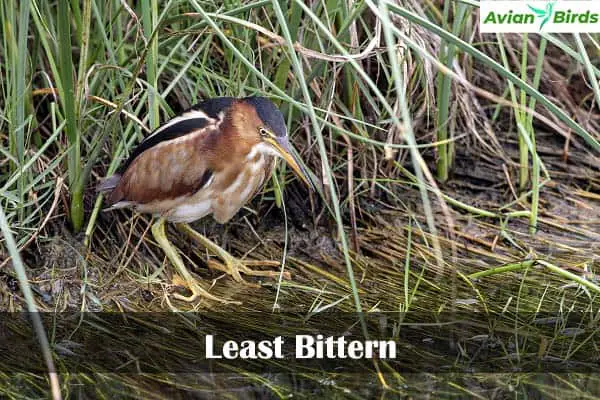
Although Least Bitterns are discreet, patient observers, their distinctive “coo-coo-coo” call can often be heard echoing through the wetlands. These herons primarily feed on aquatic invertebrates, small fish, and frogs, which they capture using their sharp bill.
Also, read: White Birds in Florida
9. Yellow-crowned Night-Heron
- Scientific name: Nyctanassa violacea
- Life span: 23 years
- Size: 58-66 cm (23-26 in)
- Weight: 0.5-1 kg (1.1-2.2 lbs)
- Wingspan: 91-112 cm (36-44 in)
- Status: Least Concern
The Yellow-crowned Night-Heron (Nyctanassa violacea) is a heron species recognized for its stunning appearance and nighttime foraging habits. Its blue-gray plumage, complemented by a black crown and vibrant yellow eye patch, gives this heron, a notable bird of north America, a regal and distinctive look.

Unlike many herons, the Yellow-crowned night heron is primarily active during the twilight and darkness of night, hence its name. It can often be spotted perched along the water’s edge, patiently awaiting the opportunity to strike at prey such as crustaceans, small fish, and insects. With its foraging prowess, this heron adds to the delicate balance of the wetland ecosystem.
“Discover the hidden beauty and significance of these often overlooked heron species.”
– Audubon Texas
Both the Least Bittern and the Yellow-crowned Night-Heron contribute to the rich biodiversity of Texas’ wetlands and coastal regions. As colonial waterbirds, they can be found nesting alongside other heron species, forming thriving and interconnected communities.
| Heron Species, including egrets and herons, are a fascinating study of adaptation and survival. | Characteristics | Habitat |
|---|---|---|
| Least Bittern | Small size, excellent camouflage | Marshes, tall grasses, cattails |
| Yellow-crowned Night-Heron | Blue-gray plumage, black crown, yellow eye patch | Wetlands, coastlines, rivers |
By understanding and appreciating the diversity of heron species, including the Least Bittern and the Yellow-crowned Night-Heron, we can better protect and conserve these remarkable birds and the habitats they depend on. Let us cherish the beauty and ecological significance of these lesser-known herons as we continue to explore the enchanting world of Texas’ avian wonders.
Little Blue Heron, a distinct Texas colonial waterbird and Tricolored Heron
The marshes and inland areas of Texas are home to two captivating heron species: the Little Blue Heron and the Tricolored Heron. These graceful birds bring a burst of vibrant color to their surroundings with their stunning blue and white plumage.
10. Little Blue Heron
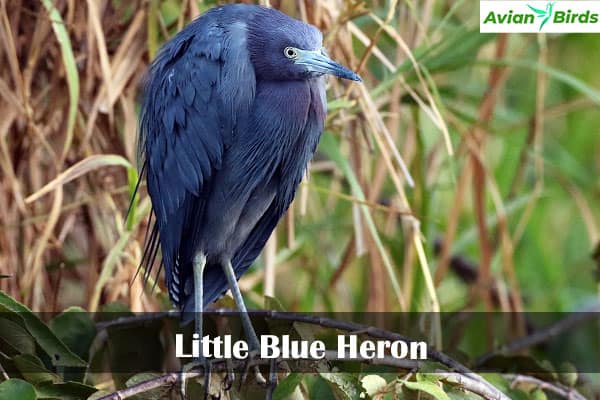
- Scientific name: Egretta caerulea
- Life span: 6 years
- Size: 56-76 cm (22-30 in)
- Weight: 0.3-0.6 kg (0.7-1.3 lbs)
- Wingspan: 86-102 cm (34-40 in)
- Status: Least Concern
The Little Blue Heron (Egretta caerulea) is a medium-sized heron that can be recognized by its slate blue feathers and deep maroon neck and legs. They are commonly found wading in the shallow waters of marshes, lakes, and swamps. Although they mainly feed on small fish, they also indulge in crustans and insects that thrive in these habitats, amidst the shrubs and small trees.
“The Little Blue Heron demonstrates how elegant and charming nature can be with its beautiful blue appearance, gracefully navigating the marshes of Texas.”
11. Tricolored Heron
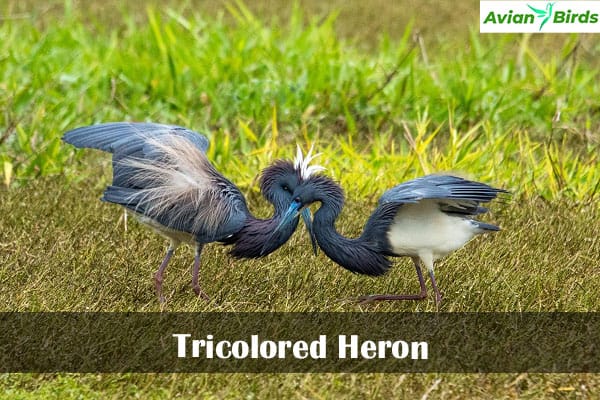
- Scientific name: Egretta tricolor
- Life span: 7 years
- Size: 58-76 cm (23-30 in)
- Weight: 0.2-0.4 kg (0.4-0.9 lbs)
- Wingspan: 91-97 cm (36-38 in)
- Status: Least Concern
The Tricolored Heron (Egretta tricolor), on the other hand, is slightly smaller in size. It features a unique blend of blue, white, and chestnut feathers, with distinctive blue-gray wings. These herons are known for their skilled foraging techniques, often seen actively chasing fish and crustaceans in shallow waters.
Both species play an essential role in maintaining the balance of their ecosystems. Their presence in marshlands helps control the populations of their prey species, maintaining a healthy and diverse habitat.
Little Blue Heron Vs. Tricolored Heron: A Closer Look
| Species | Main Characteristics | Habitat | Feeding Behavior |
|---|---|---|---|
| Little Blue Heron | Blue and white plumage with maroon neck and legs | Marshes, swamps, lakes | Feeds on small fish, crustaceans, and insects |
| Tricolored Heron | Blue, white, and chestnut feathers with blue-gray wings | Marshes, wetlands, coastlines | Chases fish and crustaceans in shallow water |
Reddish Egret and Other Texas Herons
cover the unique herons of Texas, including the Reddish Egret, a captivating heron species known for its lively and energetic hunting behavior. Texas is a haven for herons, offering a diverse range of habitats that attract a variety of heron species. Dis
12. Reddish Egret
- Scientific name: Egretta rufescens
- Life span: 15 years
- Size: 66-81 cm (26-32 in)
- Weight: 0.5-0.7 kg (1.1-1.5 lbs)
- Wingspan: 101-127 cm (40-50 in)
- Status: Near Threatened
Reddish Egret, a native heron in Texas, is a sight to behold with its reddish plumage and graceful movements. It can often be spotted along the coastlines and wetlands of Texas, showcasing its distinctive hunting style that involves dancing, flapping its wings, and darting through the water to catch its prey.
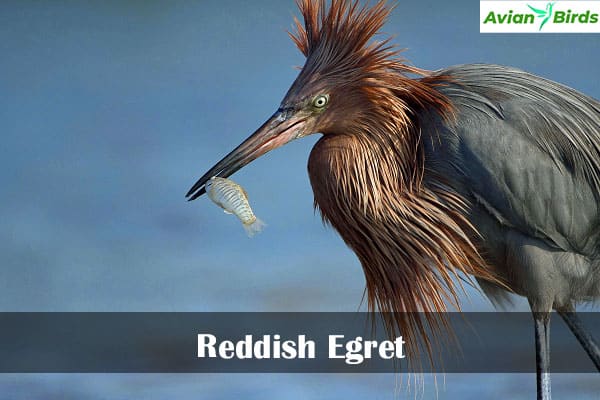
In addition to the Reddish Egret, Texas is home to a plethora of other heron species. These include the Great Blue Heron, American Bittern, Black-crowned night heron, Green Heron, Cattle Egret, Great Egret, Snowy Egret, Least Bittern, and Yellow-crowned Night-Heron.
Each heron species in Texas has its own unique characteristics and role within the ecosystem. From the majestic size of the Great Blue Heron to the stealthy hunting habits of the Black-crowned night heron, these herons add beauty and diversity to the Texas landscape.
13. Black-crowned Night-Heron
- Scientific Name: Nycticorax nycticorax
- Size: 23–26 inches
- Weight: 1.6–2.2 pounds
- Lifespan: Up to 20 years
- Diet: Mainly fish; also crustaceans, insects, and small animals
The Black-crowned night heron is a fascinating bird, easily recognized by its striking appearance. Its stout body and short neck stand out among other herons. The black crown atop its head contrasts sharply with the pale greyish-white of its wings and belly.
These nocturnal hunters are often found near freshwater ponds, marshes, and coastal areas. They prefer to forage during twilight when their prey is most active. Their diet mainly consists of fish, crustaceans, and small mammals.

In flight, they exhibit slow wingbeats, creating a graceful silhouette against the dusky sky. You might see them perched quietly on low branches or wading stealthily through shallow waters.
Their distinct red eyes add an air of mystery to their already captivating presence in Texas’s diverse habitats. Observing these birds reveals much about local ecosystems and emphasizes the importance of preserving wetland environments for future generations.
14. White Ibis
- Scientific Name: Eudocimus albus
- Size: 22–27 inches
- Weight: 1.7–2.4 pounds
- Lifespan: Up to 16 years in the wild
- Diet: Primarily crustaceans, insects, and small fish
The White Ibis is a striking bird known for its long, curved bill and pure white plumage. These elegant creatures are often seen wading in shallow waters, searching for food among marshes and wetlands.
With their pink facial skin and bright red eyes, they add a splash of beauty to the Texan landscape. Their unique feeding behaviour involves probing mud with their bills to uncover hidden crustaceans and insects.

During the breeding season, adult White Ibises develop reddish-brown feathers on their wings, making them even more visually captivating. They form large colonies, sometimes quite noisy during nesting periods.
You’ll likely spot these birds in groups, gracefully moving through the water or perched atop a tree branch. Their social nature makes them fascinating to observe as they engage with each other while foraging or resting under the sun. If you read more, what are the Types Of Ibis? If you still need to, then you must explore them.
15. Roseate Spoonbill
- Scientific Name: Platalea ajaja
- Size: 28–34 inches
- Weight: 2.6–4 pounds
- Lifespan: Up to 15 years in the wild
- Diet: Small fish, crustaceans, and insects
The Roseate Spoonbill is a striking wader that captivates birdwatchers with its vibrant pink plumage. This beauty stands out in Texas wetlands, where it can often be seen foraging for food.
These birds have unique spoon-shaped bills, which they use to sift through shallow waters in search of crustaceans and small fish. Their feeding technique involves sweeping their bill side to side, creating an enchanting sight.

Adult Roseate Spoonbills display bright pink feathers, while juveniles are typically more subdued in colour. Their long legs allow them to navigate various habitats like marshes and mangroves easily.
During nesting season, these herons build their nests high in trees or shrubs. Watching them care for their young adds another layer of fascination to these already remarkable birds. Whether you’re a seasoned birder or a casual observer, the Roseate Spoonbill will undoubtedly leave an impression on your heart!
16. Black-necked Stilt
- Scientific Name: Himantopus mexicanus
- Size: 13–15 inches
- Weight: 5–7 ounces
- Lifespan: Up to 10 years in the wild
- Diet: Primarily insects, small crustaceans, and other invertebrates
The Black-necked Stilt is a striking wader, easily recognized by its long pink legs and distinctive black-and-white plumage. This bird boasts a slender neck and a sharp bill, perfect for probing shallow waters in search of small aquatic creatures.
Typically found in wetlands, marshes, and along shorelines, the Black-necked Stilt thrives in habitats where they can hunt for insects, crustaceans, and other delicacies. With their graceful movements and high-pitched calls, they add an element of charm to any landscape.

During the breeding season, these birds are particularly captivating. They engage in elaborate courtship displays that highlight their agility and elegance. Nesting often occurs on bare ground near water sources—vulnerable spots that showcase their reliance on specific environments.
Spotting a Black-necked Stilt adds excitement to birdwatching outings across Texas. Their vibrant appearance against shimmering waters creates stunning visuals that leave lasting impressions on observers.
17. Sora Rail
- Scientific Name: Porzana carolina
- Size: 7–8 inches
- Weight: 1.5–3 ounces
- Lifespan: Up to 7 years in the wild
- Diet: Seeds, aquatic insects, snails, and small crustaceans
The Sora Rail is a small, secretive bird that often goes unnoticed. These elusive creatures prefer marshy habitats, where they can easily blend into their surroundings.
With its stout body and short tail, the Sora displays striking features. Its plumage showcases a mix of brown and grey with subtle streaks. The yellow bill stands out against its muted colors, serving as a distinctive marker.
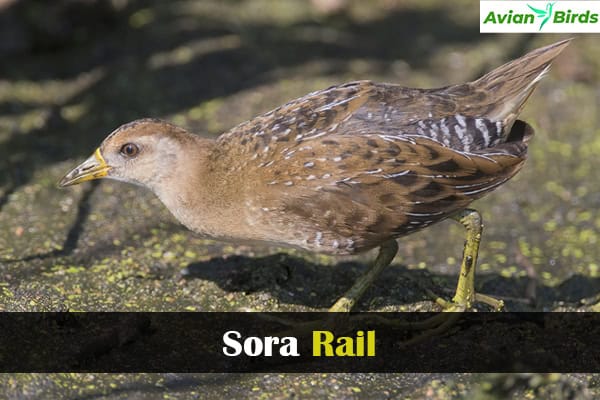
Soras are known for their unique calls—a series of whistled notes that echo through wetlands during the breeding season. This vocalization adds to their mystique while also signalling their presence.
These rails are primarily herbivorous but will feast on insects and crustaceans when needed. Observing them in action requires patience; they often move stealthily among reeds and grasses, making sightings rare yet thrilling for birdwatchers in Texas.
Overall, the herons of Texas exemplify the beauty and diversity of avian life in the Lone Star State. Their presence in Texas’s wetlands and coastal regions showcases the importance of preserving these habitats for future generations. I recommend you read about Herons in Florida
Check Our Previous Articles :
Conservation Efforts and Texas Parks
The conservation of heron populations in Texas is critically important, and several organizations, including the Texas Parks and Wildlife Department, Audubon Texas, and Texas Forest Service, are deeply involved in this effort. These groups are dedicated to safeguarding the diverse heron species that live in Texas.
One of the main focuses of these conservation initiatives is the protection and restoration of wetland habitats, which are vital for herons. Wetlands serve as crucial feeding and nesting areas for these majestic birds. Through projects aimed at managing and restoring habitats, these organizations strive to ensure that suitable environments remain available for herons and other species that depend on wetlands.
Moreover, humans also have a significant role to play in heron conservation in Texas. By practicing responsible environmental stewardship, such as reducing pollution and conserving natural areas, individuals can contribute to the health and survival of heron populations. Additionally, supporting and participating in programs led by organizations like the Texas Parks and Wildlife Department, often in partnership with institutions like Texas A&M University, enables individuals to actively help preserve these magnificent birds and their habitats in Texas.
Frequently Asked Questions
Q1. What is the largest heron in Texas?
The largest heron in Texas is the Great Blue Heron.
Q2. What is the tall bird in Texas?
The tall bird in Texas is likely the Great Blue Heron, known for its impressive height.
Q3. Are blue herons protected in Texas?
Yes, blue herons are protected in Texas under state and federal laws .
Q4. What are the GREY cranes in Texas?
The grey cranes in Texas are likely referring to the Sandhill Crane, a common crane species found in the state.

